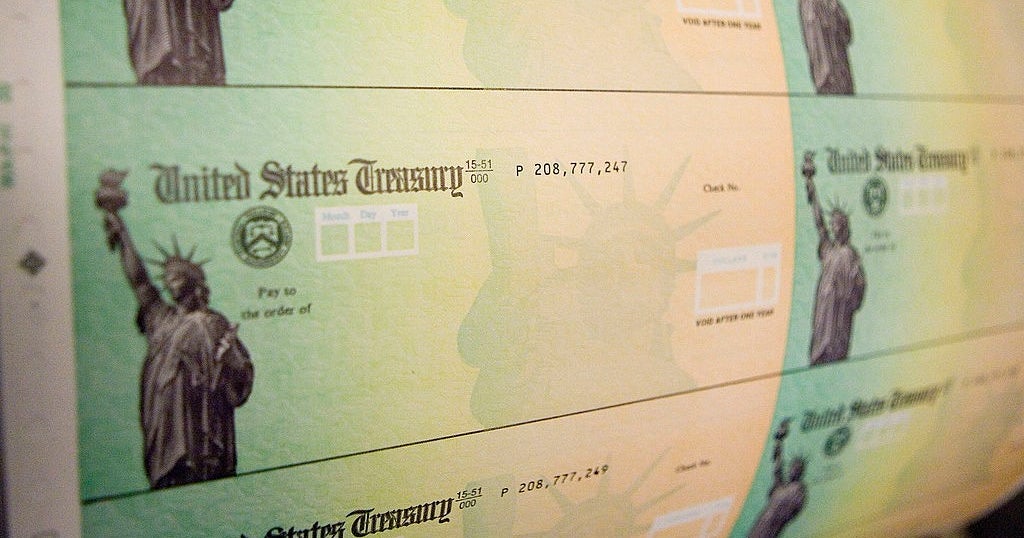The U.S. is experiencing its first East Coast port strike since 1977. Here's what to know.
Thousands of dockworkers at every major East and Gulf Coast port are now striking, closing trade gateways that handle about half of all goods shipped in containers in and out of the U.S.
President Joe Biden on Sunday said he would not intervene and that the labor dispute should be resolved through collective bargaining. The strike comes after top Biden administration officials met with members of the United States Maritime Alliance (USMX), a shipping industry group representing terminal operators and ocean carriers, on Friday, urging them to negotiate ahead of the contract expiring at midnight on September 30.
The dockworkers went on strike just after midnight on Tuesday as they rally for higher pay and more job security. The work stoppage came after negotiations stalled between the union representing dockworkers and the USMX, with both sides issuing conflicting statements about their willingness to bargain.
Experts say a shutdown could severely hamper the flow of goods and raise shipping costs. Any spike in such expenses could be passed on to consumers just as U.S. inflation normalizes, and even potentially hinder the Federal Reserve as it finally pivots to lowering interest rates.
"A port strike could cost the U.S. economy billions of dollars a day, hurting American businesses, workers and consumers across the country," Business Roundtable CEO Joshua Bolten said in a statement this weekend.
The International Longshoremen's Association (ILA) is demanding sizable wage hikes and a complete ban on the use of automated cranes, gates and container-moving trucks in unloading or loading freight.
In a statement posted early Tuesday morning on social media, ILA President Harold Daggett blamed the USMX for the strike, claiming "they decided to hold firm to foreign owned Ocean Carriers earning billion-dollar profits at United States ports, but not compensate the American ILA longshore workers who perform the labor that brings them their wealth."
Daggett added, "We are prepared to fight as long as necessary, to stay out on strike for whatever period of time it takes, to get the wages and protections against automation our ILA members deserve."
Here's what to know about the labor fight, which would be the first mass work stoppage at eastern ports in nearly half a century.
What are the key issues in the labor dispute?
The dispute involves a contract covering tens of thousands dockworkers at ports from Massachusetts to Texas whose current labor contract expired at midnight Monday. The walkout represents the first East Coast dock strike since 1977.
A total of 14 ports involving some 25,000 workers are affected by the strike, according to USMX:
- Baltimore
- Boston
- Charleston, South Carolina
- Jacksonville, Florida
- Miami (USMX groups Port Everglades in Ford Lauderdale, Florida, with the Port of Miami)
- Houston
- Mobile, Alabama
- New Orleans
- New York/New Jersey
- Norfolk, Virginia
- Philadelphia
- Savannah, Georgia
- Tampa, Florida
- Wilmington, Delaware.
But because the economic activity in ports touches a range of businesses, such as warehousing and transport, the fallout from work stoppages could put more than 100,000 employees temporarily out of work, according to economists.
Union workers at ports in the East Coast and Gulf Coast earn a base wage of $39 an hour after six years on the job. That is significantly less than their unionized West Coast peers, who make $54.85 an hour — a rate that will increase to $60.85 in 2027, excluding overtime and benefits.
Assuming a 40-hour workweek, West Coast port workers are making more than $116,000 a year, versus $81,000 for their counterparts in the East. The ILA's initial demands included a 77% wage hike over six-year contract, with the labor group arguing that the increased pay would make up for the surge in U.S. inflation in recent years.
The USMX in August offered what it called an "industry leading" pay hike, but the sides remain far apart.
Yet the differences are not only over pay. To protect job security, the ILA is demanding a complete ban on the automation of cranes, gates and container movements used in the loading or unloading of cargo.
The Maritime Alliance said it offered to maintain provisions in the current contract barring fully automated terminals, while also banning use of semi-automated equipment in a new labor agreement.
Unable to bridge the divide, the ILA in June suspended negotiations with USMX, saying the use of automated gates to let trucks enter ports without ILA labor violated its existing labor agreement.
What is the impact of a port strike?
The ports affected by the strike handle more than 68% of all containerized exports in the U.S. and roughly 56% of containerized imports, according to industry data. So even a short strike would cause significant disruptions in regional trade flows.
A strike would reduce U.S. economic activity by between $4.5 billion and $7.5 billion for every week it continues, according to analysts at Oxford Economics. The investment research firm estimates it would take up to a month to clear the backlog of shipments that pile up while ports remain shut.
Although West Coast terminals could absorb some cargo diverted from eastern ports, they couldn't handle it all, nor could the U.S. rail system, experts say.
Should a strike persist longer than a month or so, some companies could face shortages of parts and other inputs. Much of the raw materials that go into a range of products flow through the East and Gulf Coast ports, such as cotton, wood and copper. The auto and pharmaceutical industries, which maintain lean inventories, could be affected, while port shutdowns in Miami and Norfolk could affect tobacco companies.
In addition, a strike could hamper shipments of products such as bananas, manufacturing components and plywood, interrupting the flow both of consumer goods and industrial parts for factories. Fresh meat and other refrigerated food could spoil, resulting in shortages and increased prices.
"I think everyone's a bit nervous about it," said Mia Ginter, director of North America ocean shipping for C.H. Robinson, a logistics company. "The rhetoric this time with the ILA is at a level we haven't seen before."
The labor dispute also comes at a time when the Federal Reserve is closely monitoring the labor market for signs of weakening.
"In principle, the Fed should look through any temporary weakness, but it might be difficult to separate the noise from the signal. Therefore, the strike would increase the odds of another 50 basis point cut in November," Grace Zwemmer, associate U.S. economist, Oxford Economics, wrote in a Thursday research note.
How are companies preparing?
By contrast, consumers probably wouldn't notice shortages of store goods during the holiday shopping season, as most products are already housed in warehouses after being transported ahead.
Jonathan Chappel, senior managing director of transportation at Evercore ISI, an investment research firm, said a strike would not mean "Santa's not showing up."
Imports to U.S. ports are running 10% ahead of where they were last year, indicating that some cargo had been shipped in expectations of a strike, according to Ben Nolan, a transportation analyst at investment bank Stifel.
"Many retailers have already taken steps to mitigate the potential impact of a strike by bringing in products earlier or shifting products to the West Coast," said Jonathan Gold, vice president of supply chain and customs policy at the National Retail Federation.
Still, given the complexity and interconnectedness of global supply chains, "Even a minor disruption would have a negative impact and cause delays at a critical time for both retailers and consumers," he added.
The ILA on Wednesday said its members would continue to handle all military cargo in the event of a strike, and would also continue to work passenger cruise vessels so as not to inconvenience "the tens of thousands of Americans who have booked trips in advance."
Could there be a political solution?
If a strike were deemed to threaten national health or safety, under the Taft-Hartley Act the president could seek a court order for an 80-day cooling-off period.
Although a Biden administration official tells CBS News that the U.S. Labor Department is monitoring the situation and has been in touch with the sides, there are currently no plans to get involved in the talks.
"We've never invoked Taft-Hartley to break a strike and are not considering doing so now," the White House told CBS News.
By contrast, the Biden administration has in recent years intervened to resolve potentially disruptive labor disputes.
In 2022, Mr. Biden and Congress stepped in to prevent a railroad strike, with the president signing legislation crafted by lawmakers to impose a tentative deal on dozens of unions representing 115,000 workers. And in 2023, Acting Labor Secretary Julie Su played a key role in brokering a deal to avert a strike and broker a new labor deal for West Coast dockworkers.
The union's leverage is also stronger ahead of the presidential election as candidates vie for the labor vote, and with visions of clogged ports and product shortages during the pandemic still in voters' minds.
"If ever there was a time that labor can get what they want," Stifel's Nolan said, "it's right now."
Some observers think that when push comes to shove, Mr. Biden may act to limit the damage.
It's unlikely that the U.S. government would intervene as promptly as Canada did in a labor dispute that shut down the country's rail traffic last month, when the Canadian government ordered railroads to enter binding arbitration less than a day in, noted Zwemmer at Oxford Economics.
"However, if the strike lasts for several weeks, the odds of government involvement in the negotiations will rise, especially with the presidential election rapidly approaching," the economist stated.
"The potential strike at East and Gulf Coast ports is unlikely to trigger any major economic disruption because we strongly suspect that, this close to the election and despite denials ahead of time, President Biden would have little choice but to step in and invoke back-to-work legislation," analysts at Capital Economics wrote.



